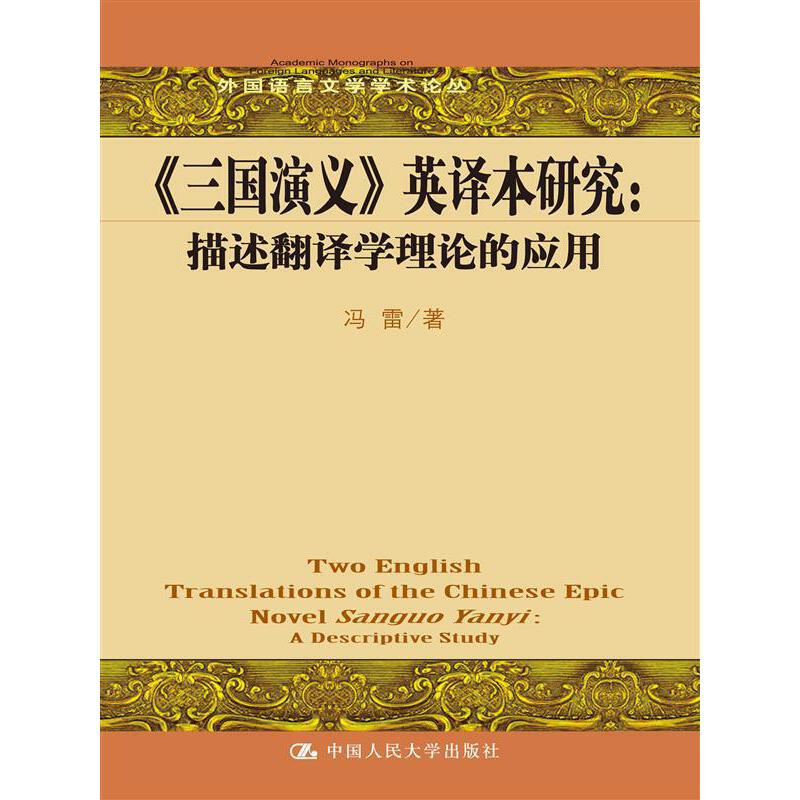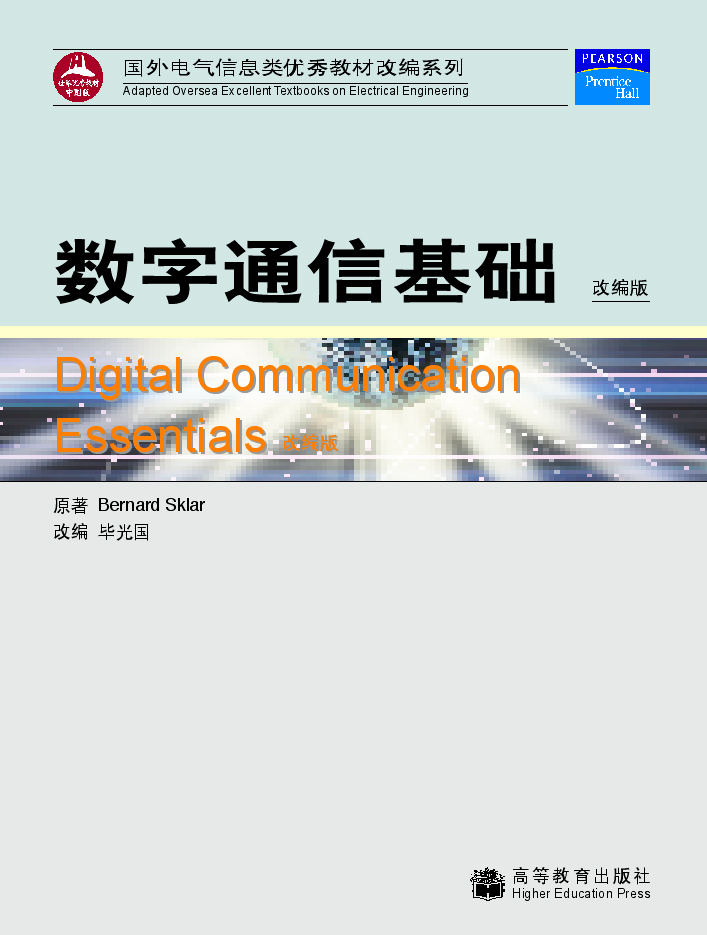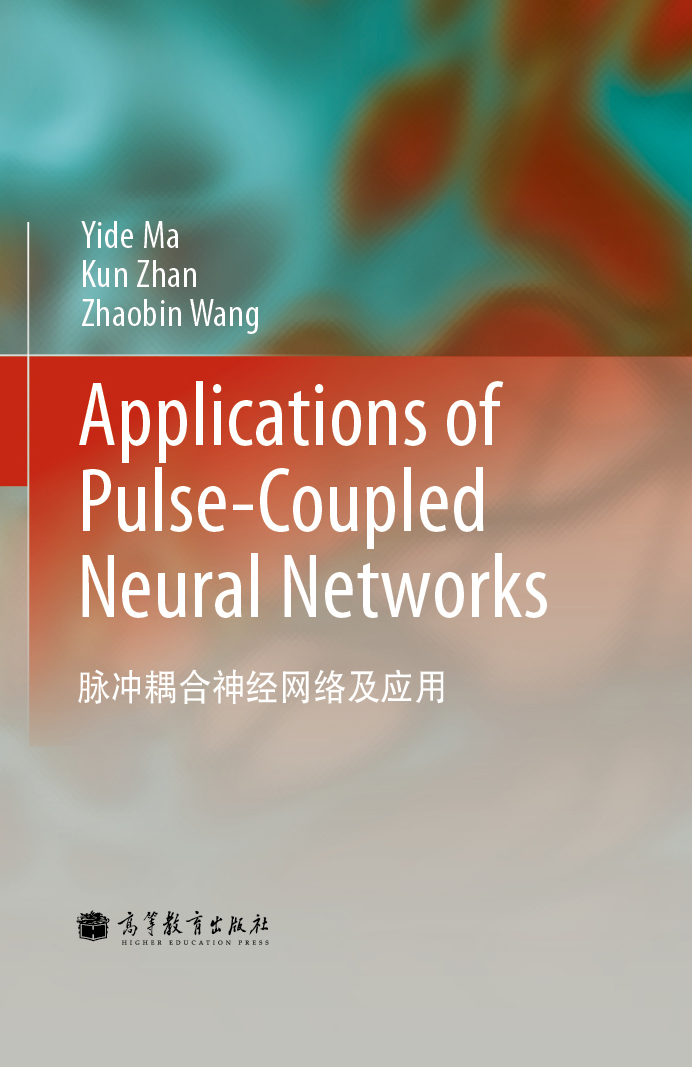《三国演义》英译本研究:描述翻译学理论的应用 / 外国语言文学学术论丛
定价:¥38.00
作者: 冯雷
出版时间:2013-10
出版社:中国人民大学出版社
- 中国人民大学出版社
- 9787300182797
- 1-1
- 269916
- 2013-10
- 283
- 324
- H315.9
目录
Chapter 1 Introduction
1.1 Background of the study
1.2 Brief background information on the two translations
and translators
1.3 Overview of research conducted on the translations
of Sanguo Yanyi
1.4 Problem statement and focus
1.5 Research goal
1.6 Theoretical framework
1.6.1 Retranslation hypothesis
1.6.2 Unguistic approach versus
functionalist
approach
1.6.3 Domestication versus
foreignization
1.6.4 Descriptive studies of the two
translations
1.7 Research design and methodology
1.8 Chapter layout
Chapter 2 Discussion of the source text, Sanguo Yanyi
2.1 Introduction
2.2 How the first Chinese novel came into being
2.3 The structure and features of a traditional
Chinese
novel
2.4 The other
novels
2.4.1 Shuihu Zhuan
2.4.2 Xiyou Ji
2.4.3 Honglou Meng
2.5 The source
text, Sanguo Yanyi
2.5.1 The title, authorship and editions of
the novel
2.5.2 Sources that the novel uses
2.5.3 The plot and style of writing
2.5.4 Fictitious changes to the historical facts
2.5.5 The structure
2.5.6 The characters
2.5.7 Sanguo Yanyi-related topics for study and the
theme(s) of the novel
2.5.8 Adaptations
2.5.9 The influence
2.5.10 Research conducted on Sanguo Yanyi by
Western scholars
2.5.11 Motivation for choosing Sanguo Yanyi as a
focus of study
2.6
Conclusion
Chapter 3 The English translations and translators of Sanguo
Yanyi
3.1
overview of the translations of Chinese classics into
foreign languages
3.2 Translations of Sanguo Yanyi into foreign languages
other than English
3.3
English translations of 5anguo Yanyi
3.3.1 Abridgedtranslations in journals and book
chapters
3.3.2 Separate editions of the English translations
of
Sanguo Yanyi
3.4 The
two complete English translations
3.4.1 Charles Henry Brewitt-Taylor's translation
3.4.2 Roberts's translation
3.4.3 Reviews comparing both translations
3.5 The
translators
3.5.1 Charles Henry Brewitt-Taylor
3.5.2 Moss Roberts
3.5.3 Social and academic backgrounds and interests
of the two translators
3.6
Retranslation hypothesis
3.6.1 Denotation of the concept
3.6.2 Theoretical assumptions on retranslation
3.7
Roberts's translation of 5anguo Yanyi as a retransla-
tion
3.8
Conclusion
~hapter 4 Literature study
4.1
Linguistic approaches in TS
4.1.1 Nida: Theory of "equivalences"
4.1.2 Catford: Formal correspondence and textual
equivalence
4.1.3 Peter Newmark: Semantic and communicative
translation
4.1.4 Neubert's "tol-down model" a textual
perspective
on translation
4.2
Descriptive translation studies (DTS)
4.2.1 Holmes's scheme of the discipline
4.2.2 Polysystem theory
4.2.3 Toury's DTS
4.2.4 Theory of rewriting
4.3
Domestication and foreignization
4.3.1 Venuti
4.3.2 Domestication
4.3.3 Foreignization
4.4
Conclusion
Chapter 5 A descriptive study of the two English
translations
of Sanguo
Yanyi
5.1
Methodology of describing translations
5.1.1 Jose Lambert and Hendrik van Gorp's model of
describing translations
5.2 A
comparison between the two translations
5.2.1 Preliminary data
5.2,2 Macro-level structures
5.2.3 Micro-level comparisons
5.2.4 Systemic context
5.3 Conclusion
Chapter 6 Conclusion
6.1 General findings
6.1.1 Translation means variation
6.1.2 Translation approaches and strategies
6.2 Translation norms and laws
6.3 Different readerships for the English translations of
Sanguo Yanyi
6.4 Further topics for research
Bibliography
Addenda
Addendum A: Covers of some of Brewitt-Taylor's translation of
Sanguo
Addendum B: Covers of some of Roberts's translation of Sanguo
Yanyi
Addendum C:The article by E.T.C.W that appeared in Peking
&
Tientsin Times
Addendum D: Idioms collected in the selected chapters
Addendum E: Titles, ranks and offices in the selected
chapters
1.1 Background of the study
1.2 Brief background information on the two translations
and translators
1.3 Overview of research conducted on the translations
of Sanguo Yanyi
1.4 Problem statement and focus
1.5 Research goal
1.6 Theoretical framework
1.6.1 Retranslation hypothesis
1.6.2 Unguistic approach versus
functionalist
approach
1.6.3 Domestication versus
foreignization
1.6.4 Descriptive studies of the two
translations
1.7 Research design and methodology
1.8 Chapter layout
Chapter 2 Discussion of the source text, Sanguo Yanyi
2.1 Introduction
2.2 How the first Chinese novel came into being
2.3 The structure and features of a traditional
Chinese
novel
2.4 The other
novels
2.4.1 Shuihu Zhuan
2.4.2 Xiyou Ji
2.4.3 Honglou Meng
2.5 The source
text, Sanguo Yanyi
2.5.1 The title, authorship and editions of
the novel
2.5.2 Sources that the novel uses
2.5.3 The plot and style of writing
2.5.4 Fictitious changes to the historical facts
2.5.5 The structure
2.5.6 The characters
2.5.7 Sanguo Yanyi-related topics for study and the
theme(s) of the novel
2.5.8 Adaptations
2.5.9 The influence
2.5.10 Research conducted on Sanguo Yanyi by
Western scholars
2.5.11 Motivation for choosing Sanguo Yanyi as a
focus of study
2.6
Conclusion
Chapter 3 The English translations and translators of Sanguo
Yanyi
3.1
overview of the translations of Chinese classics into
foreign languages
3.2 Translations of Sanguo Yanyi into foreign languages
other than English
3.3
English translations of 5anguo Yanyi
3.3.1 Abridgedtranslations in journals and book
chapters
3.3.2 Separate editions of the English translations
of
Sanguo Yanyi
3.4 The
two complete English translations
3.4.1 Charles Henry Brewitt-Taylor's translation
3.4.2 Roberts's translation
3.4.3 Reviews comparing both translations
3.5 The
translators
3.5.1 Charles Henry Brewitt-Taylor
3.5.2 Moss Roberts
3.5.3 Social and academic backgrounds and interests
of the two translators
3.6
Retranslation hypothesis
3.6.1 Denotation of the concept
3.6.2 Theoretical assumptions on retranslation
3.7
Roberts's translation of 5anguo Yanyi as a retransla-
tion
3.8
Conclusion
~hapter 4 Literature study
4.1
Linguistic approaches in TS
4.1.1 Nida: Theory of "equivalences"
4.1.2 Catford: Formal correspondence and textual
equivalence
4.1.3 Peter Newmark: Semantic and communicative
translation
4.1.4 Neubert's "tol-down model" a textual
perspective
on translation
4.2
Descriptive translation studies (DTS)
4.2.1 Holmes's scheme of the discipline
4.2.2 Polysystem theory
4.2.3 Toury's DTS
4.2.4 Theory of rewriting
4.3
Domestication and foreignization
4.3.1 Venuti
4.3.2 Domestication
4.3.3 Foreignization
4.4
Conclusion
Chapter 5 A descriptive study of the two English
translations
of Sanguo
Yanyi
5.1
Methodology of describing translations
5.1.1 Jose Lambert and Hendrik van Gorp's model of
describing translations
5.2 A
comparison between the two translations
5.2.1 Preliminary data
5.2,2 Macro-level structures
5.2.3 Micro-level comparisons
5.2.4 Systemic context
5.3 Conclusion
Chapter 6 Conclusion
6.1 General findings
6.1.1 Translation means variation
6.1.2 Translation approaches and strategies
6.2 Translation norms and laws
6.3 Different readerships for the English translations of
Sanguo Yanyi
6.4 Further topics for research
Bibliography
Addenda
Addendum A: Covers of some of Brewitt-Taylor's translation of
Sanguo
Addendum B: Covers of some of Roberts's translation of Sanguo
Yanyi
Addendum C:The article by E.T.C.W that appeared in Peking
&
Tientsin Times
Addendum D: Idioms collected in the selected chapters
Addendum E: Titles, ranks and offices in the selected
chapters






